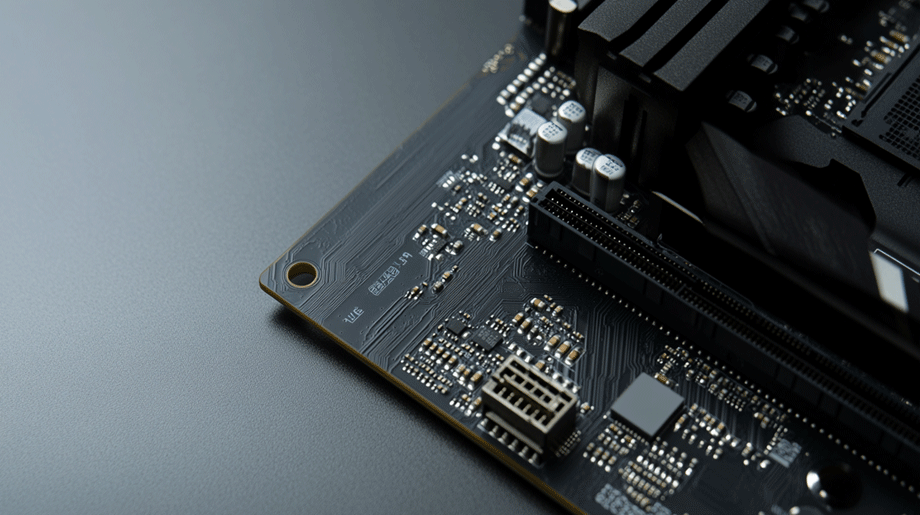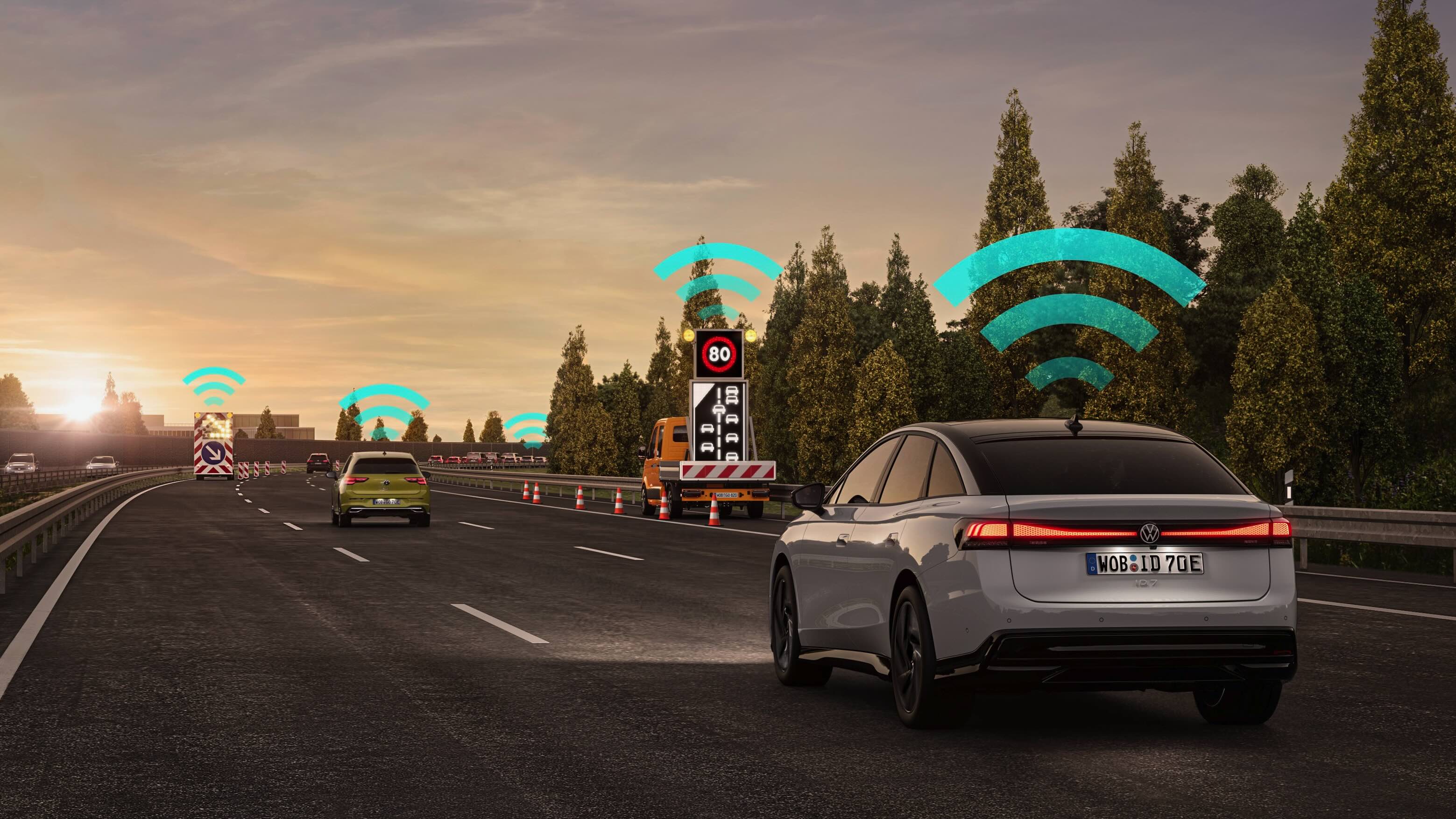The Fast Lane of Data: Leveraging PCIe in Modern Vehicle Architectures
How does the adoption of PCIe for the automotive industry support data transfer and ensure safety and a seamless user experience?

Vehicle architectures are evolving rapidly. For the last decade, domain-oriented architectures with multiple control units per functional domain have been dominant. These domains can include Advanced Driver Assistance Systems, infotainment, vehicle motion, and connectivity, among others. Each domain’s capabilities are greatly increasing thanks to the advance of more powerful hardware and software in the car. For example, the development of state-of-the-art ADAS systems including powerful sensors like cameras, lidar and radar is driving the performance needs of our corresponding CARIAD Compute Platform. To meet the high computational and data transfer demands of ADAS and automated driving (AD) systems, the automotive industry is moving towards more centralized compute power – and thus towards new ways of interconnecting components and transferring data.
From Distributed to Centralized: The Evolution of Vehicle Architectures
Historically, vehicle architectures have relied on controllers connected by industry-specific bus systems, like LIN, CAN, FlexRay and, more recently, Automotive Ethernet. Their task: transferring data between the various components of the vehicle network. However, this diverse collection of different bus systems resulted in highly distributed computation with low local performance.
The ongoing evolution towards more centralization is driven by the demand for higher performance across the vehicle and its domains. Thus, new architectures involve zonal controllers supporting high-performance central compute units with increasing hardware integration. This centralization reduces wiring and network complexity, and enables powerful centralized compute platforms for automated driving and next-generation infotainment.
PCI Express (PCIe): A High-Speed Backbone for Automotive Compute Platforms
Despite the shift towards more centralized vehicle architectures, computational loads still need to be distributed across multiple compute units in the form of System-on-Chips (SoCs) coupled by communication technology. At the same time, technologies like Ethernet and CAN bus are approaching their limits due to ever-increasing data transfer requirements - such as high-resolution video and sensor data –, and the growing need for low latencies to ensure safety and seamless user experiences. New, advanced technical solutions are required to handle these high data loads in automotive environments.
CARIAD has adopted PCI Express (PCIe) - a high-speed serial bus technology widely used in PCs, servers, and GPUs, to meet these challenges. PCIe offers the fastest available method for short-range data transmission, making it ideal for automotive data backbones.
Key PCIe benefits include:
- High-bandwidth, low-latency data exchange via Direct Memory Access (DMA)
- Scalable, flexible fabric topologies using PCIe switches
- Shared memory and peripheral access between SoCs
- Support for parallel computing workloads, such as AI and machine learning
These properties make PCIe a natural enabler for centralized and zonal vehicle architectures. However, some challenges still exist since this technology is not yet standardized for automotive use cases.
Streamlining PCIe for automotive use
Integrating PCIe into automotive applications involves bridging the gaps between the technology's capabilities and the specific requirements of the automotive domain to turn PCIe into a true enabler for centralized architectures. Key challenges include:
- Custom Software Development: No turnkey solution existed previously, necessitating a streamlined PCIe stack tailored for automotive use. This involves focusing on essential features like Quality of Service (QoS), data consistency and efficient notifications.
- Communication Infrastructure Needs: PCIe introduces new paradigms like shared memory, requiring comprehensive support for modeling, configuration, and integration. Efficient modeling and automatic configuration generation are crucial for scalability.
- Safety and Security: Mechanisms for state management, error detection, and adherence to automotive quality processes and safety regulations are vital. Additional features and configurations address security concerns identified through rigorous analysis.
PCIe: Enabler for ADAS in Zonal and Centralized Architectures
PCIe technology has enabled several use cases within CARIAD’s Compute Platform for automated driving, all of which have high bandwidth and low-latency requirements that exceed the capabilities of even multi-Gigabit Ethernet. By optimizing the system architecture with PCIe and specifically a PCIe switch, we have unlocked new use cases and reduced vehicle and development costs.
Here are two examples how PCIe can improve next-generation architectures:
 PCIe technology supports ADAS by enabling high-speed, low-latency data transfers between SoCs and peripherals connected by a PCIe switch.
PCIe technology supports ADAS by enabling high-speed, low-latency data transfers between SoCs and peripherals connected by a PCIe switch.
1. Distribution of Video Camera Streams:
As part of advanced parking functions, video camera streams are forwarded to the infotainment SoC for display of a 360-degree top view parking assistance perspective. PCIe makes the distribution more efficient, thus increasing the user experience.
Advantages:
- Reduced vehicle wiring thanks to PCIe bandwidth
- Lower CPU usage on both ADAS and infotainment SoCs via PCIe Switch DMA
- Faster transmission than Ethernet resulting in lowest possible delay of the top view video image
 Fast PCIe Switch DMA data transfers enable parallel processing of the same shared sensor data by multiple SoCs, independent of where the sensors are connected.
Fast PCIe Switch DMA data transfers enable parallel processing of the same shared sensor data by multiple SoCs, independent of where the sensors are connected.
2. Parallel Processing of Sensor Data:
By connecting the vehicle sensors to selected SoCs and distributing the captured data over PCIe, we can greatly reduce hardware complexity. Processing is distributed across multiple SoCs, enabled by PCIe’s speed and low latency.
Advantages:
- Simplified system architecture
- Enables advanced features that require distributed, parallel computation
Turning PCIe into a Strategic Advantage
Controlling the entire ADAS stack including PCIe interfaces is vital for long-term success. It allows full ownership of the technology, ensures seamless interoperability across different SoCs, ECUs, and operating systems, and supports diverse runtime environments — like QNX or Linux.
In contrast to proprietary implementations where applications must manage low-level PCIe intricacies, our CARIAD ADAS software stack offers:
- An OS and hardware abstraction layer
- A robust core implementation
- A standard, application-facing API
This approach simplifies development, increases portability, and accelerates integration across platforms. PCIe allows for cost-effective, scalable and flexible solutions as global automotive innovation accelerates.




